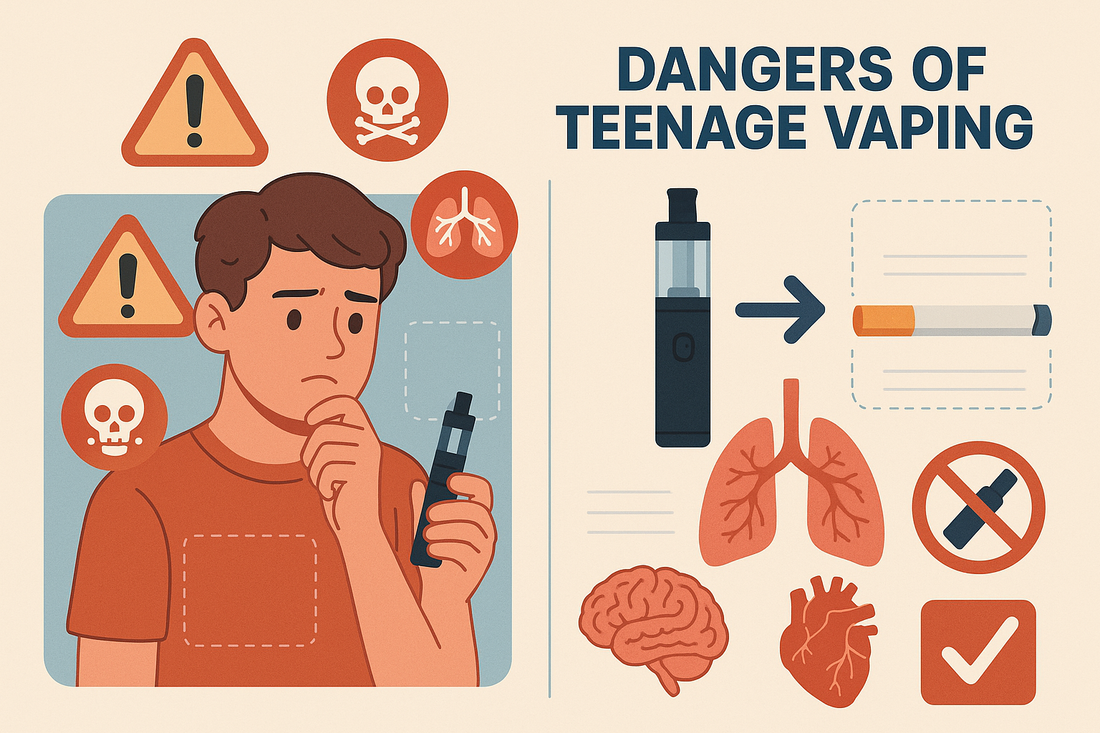Teenage Vaping: Issues, Risks, and Legal Actions
At Vape King DXB, we do not compromise on teenage vaping – our age policy is 21+ only
Why Do Teenagers Vape?
- Peer pressure and social media influence
- Curiosity about vaping and “cool” trends
- Attractive fruity and candy-like flavors
- Easy access through irresponsible sellers or online stores
Health Risks of Teenage Vaping
- Lung problems: coughing, asthma, chest pain, and breathing issues
- Addiction: nicotine harms the teenage brain and causes dependence
- Gateway to smoking: vapers are three times more likely to start smoking
- Mental health risks: linked to stress, anxiety, and depression
- Severe cases: collapsed lungs and hospitalization reported in teens
Legal Age and Rules in the UAE
UAE Law: Minimum age is 18 to buy or use vapes. Selling to minors can result in fines of up to AED 15,000 and jail time. Public vaping is banned in malls, restaurants, schools, hospitals, and public transport.
Vape King DXB Policy: We go further – our minimum age is 21+. This ensures only responsible adults use our products.
What Parents and Schools Can Do
- Talk openly with teenagers about vaping risks
- Watch for signs: coughing, fruity smells, mood changes
- Schools are installing vape detectors and running awareness programs
- Parents can set boundaries and encourage healthy habits
Frequently Asked Questions (FAQ)
What happens if a teenager vapes?
Vaping can harm lung health, cause coughing, chest pain, and lead to nicotine addiction. It also increases the risk of smoking later.
Why do teenagers start vaping?
Peer pressure, social media influence, curiosity, and attractive fruity flavors are the main reasons.
At what age do most teenagers start vaping?
Many begin experimenting around 14–16 years old, but laws strictly prohibit sales to anyone under 18 in the UAE.
What are the 5 negative effects of vaping?
Lung damage, nicotine addiction, mental health problems, gateway to smoking, and possible long-term health issues.
Can doctors tell if a teenager vaped?
Yes, health professionals can detect nicotine in the body and may identify symptoms linked to vaping.
What is the youngest age to buy a vape?
In the UAE, the legal age is 18+. At Vape King DXB, our strict policy allows sales only to customers 21+.
Final Thoughts
Teen vaping is a serious health and legal issue. With education, awareness, and strict rules, we can protect the younger generation. At Vape King DXB, we are committed to this mission with our strict 21+ age policy and a zero-compromise approach on teenage vaping.


